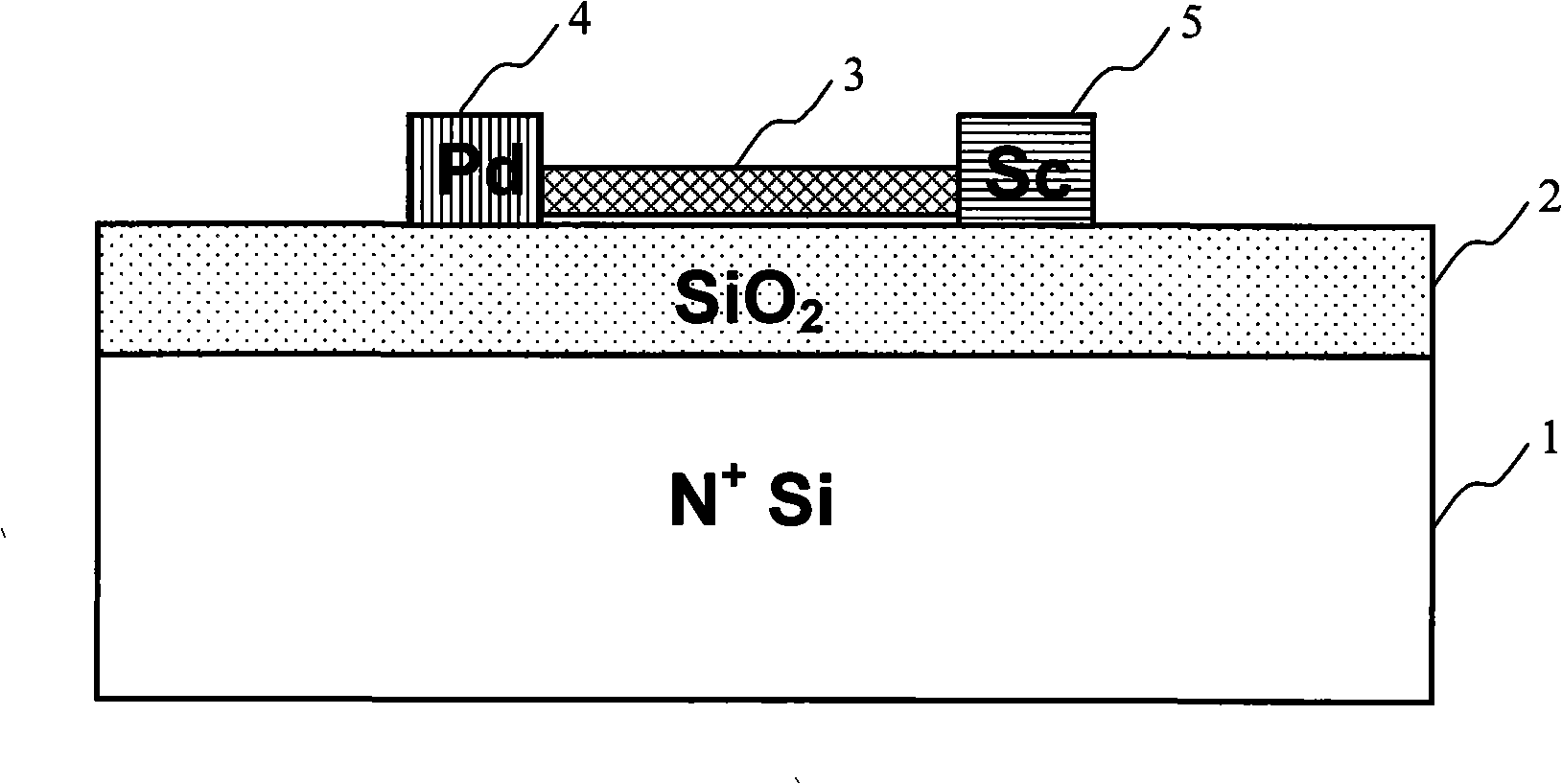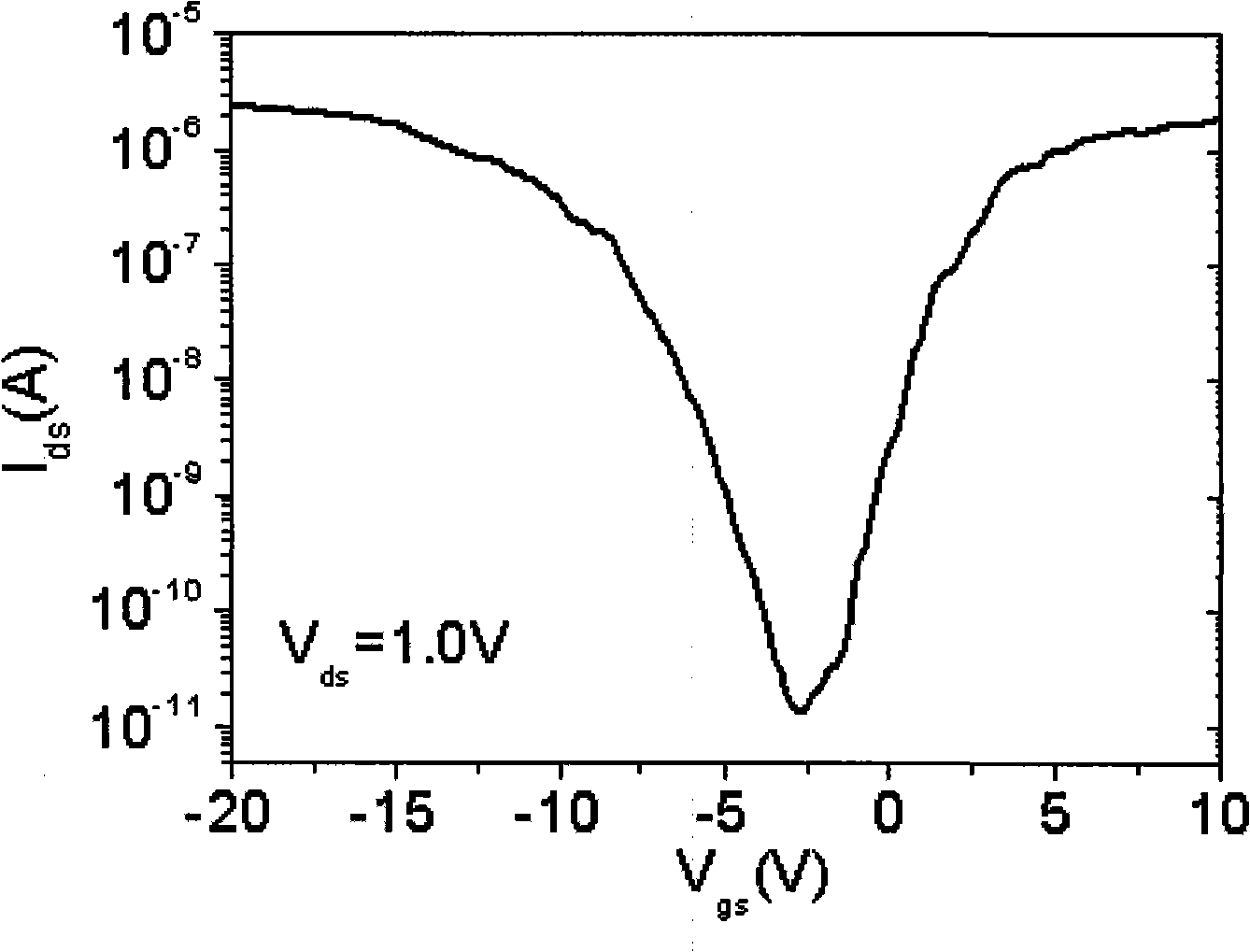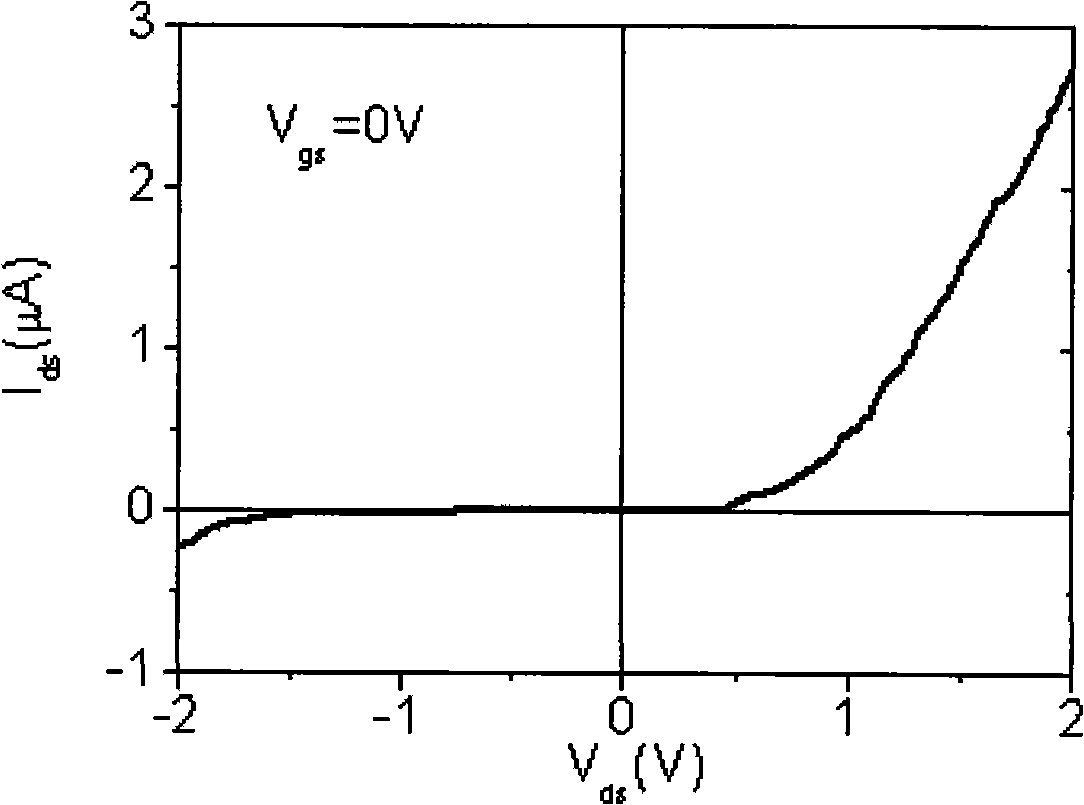Photoelectric device based on carbon nano-tube, optoelectronic integrated circuit unit and circuit
A technology of carbon nanotubes and integrated circuits, applied in the field of nanoelectronics, can solve problems affecting silicon-based optoelectronic devices, scale differences are unlikely, and integrate together to achieve the effect of a simple device structure
- Summary
- Abstract
- Description
- Claims
- Application Information
AI Technical Summary
Problems solved by technology
Method used
Image
Examples
Embodiment 1
[0048] The structure of the single-walled carbon nanotube high-performance multifunctional optoelectronic device with Pd and Sc as the source and drain electrodes is as follows: figure 1 As shown, including a conductive substrate 1, a SiO 2 An insulating layer 2 and a carbon nanotube 3, and the carbon nanotube 3 has a Pd electrode 4 and a Sc electrode 5 in direct contact with it. Concrete preparation steps are as follows:
[0049] 1. By positioning growth, or dropping the dispersed single-walled carbon nanotube solution onto the marked Si / SiO 2 on the substrate, thus obtaining the Si / SiO 2 A single-walled carbon nanotube on a substrate;
[0050] 2. Observing with a scanning electron microscope or an atomic force microscope, record the specific position of the single-walled carbon nanotubes;
[0051] 3. Apply photoresist on the substrate and form the shape of the Pd electrode by optical exposure or electron beam lithography;
[0052] 4. Put the photolithographic sample int...
Embodiment 2
[0058] The structure of the basic unit of the large-scale optoelectronic integrated circuit based on carbon nanotubes with the top gate structure is shown in Figure 11, including a conductive substrate 1, a SiO 2 An insulating layer 2, a carbon nanotube 3, and two Pd electrodes 4 and two Sc electrodes 5 arranged sequentially on the carbon nanotube 3, and the carbon nanotubes between each Pd electrode and Sc electrode are covered with a grid dielectric layer 6. On the gate dielectric layer is the top gate electrode 7 . Concrete preparation process comprises the following steps:
[0059] 1. By positioning growth, or dropping the dispersed carbon nanotube solution onto the marked Si / SiO 2 on the substrate, obtained on Si / SiO 2 One or more parallel carbon nanotubes on a substrate;
[0060] 2. Observe and record the specific position of carbon nanotubes through scanning electron microscope or atomic force microscope;
[0061] 3. Apply photoresist on the substrate and form the s...
Embodiment 3
[0070] A large-scale optoelectronic integrated circuit based on carbon nanotubes such as Figure 14 As shown, two parallel carbon nanotubes 3 are located on the conductive substrate 1 and the insulating layer 2 , and a plurality of Pd electrodes 4 and a plurality of Sc electrodes 5 are arranged on the carbon nanotubes 3 . Its specific preparation process comprises the following steps:
[0071] 1. By positioning growth, or dropping the dispersed carbon nanotube solution onto the marked Si / SiO 2 on the substrate, obtained on Si / SiO 2 One or more parallel carbon nanotubes on a substrate;
[0072] 2. Observe and record the specific position of carbon nanotubes through scanning electron microscope or atomic force microscope;
[0073] 3. Apply photoresist and form all the Pd electrode shapes required in the figure by optical exposure or electron beam lithography;
[0074] 4. Put the photolithographic sample into the electron beam evaporation system, and evaporate a layer of meta...
PUM
 Login to View More
Login to View More Abstract
Description
Claims
Application Information
 Login to View More
Login to View More - R&D
- Intellectual Property
- Life Sciences
- Materials
- Tech Scout
- Unparalleled Data Quality
- Higher Quality Content
- 60% Fewer Hallucinations
Browse by: Latest US Patents, China's latest patents, Technical Efficacy Thesaurus, Application Domain, Technology Topic, Popular Technical Reports.
© 2025 PatSnap. All rights reserved.Legal|Privacy policy|Modern Slavery Act Transparency Statement|Sitemap|About US| Contact US: help@patsnap.com



